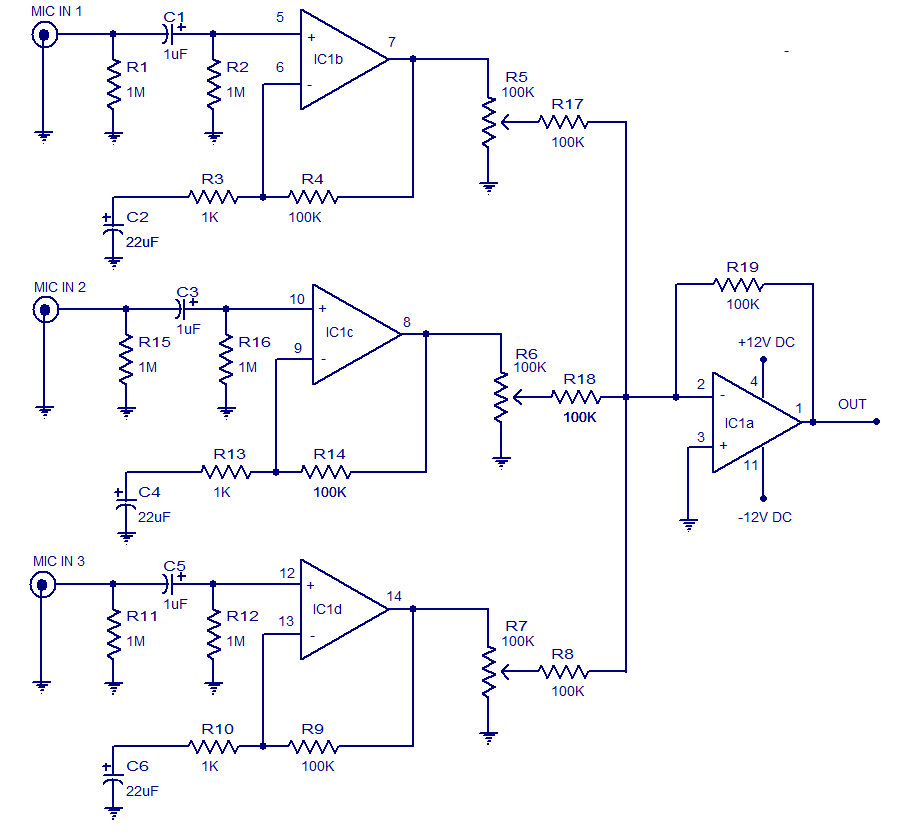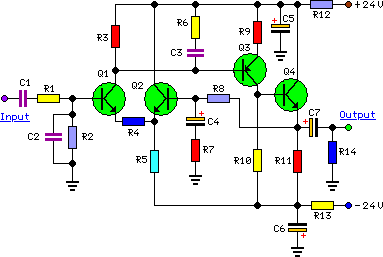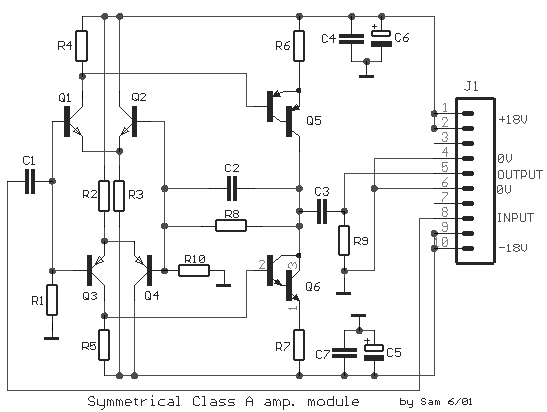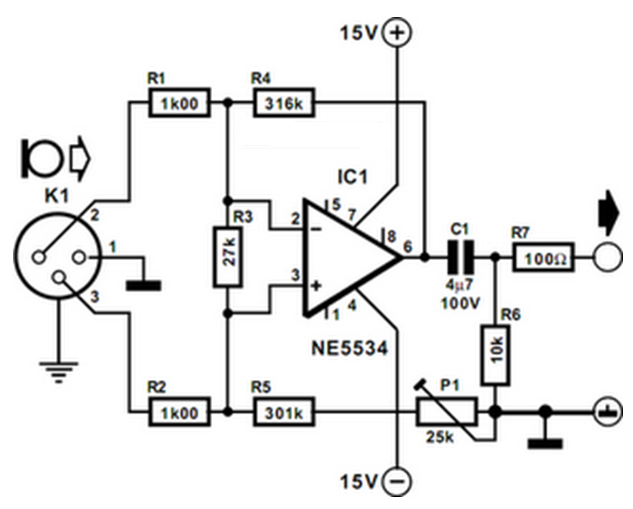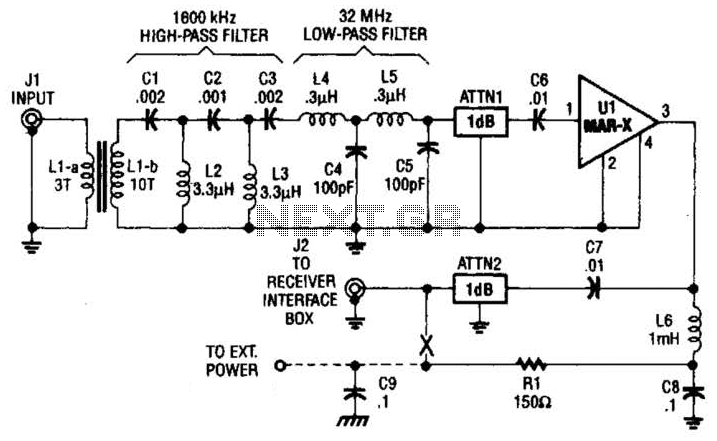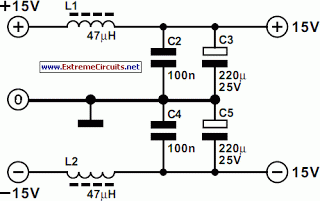
Passive RIAA Preamplifier

There are two types of preamplifiers for magnetic phono cartridges. An example of the most common type is the one described in the March 2002 issue of SIL.
Preamplifiers for magnetic phono cartridges serve the critical function of amplifying the low-level audio signals generated by the cartridge before they are sent to the main amplifier. The two primary types of preamplifiers are passive and active. Passive preamplifiers typically do not provide any gain but may offer impedance matching, while active preamplifiers utilize electronic components to amplify the signal.
The most common type of active preamplifier, as referenced in the March 2002 issue of SIL, employs a combination of operational amplifiers (op-amps), resistors, and capacitors to achieve the desired gain and frequency response. These preamplifiers are designed to handle the specific characteristics of magnetic phono cartridges, which usually output signals in the millivolt range.
In the schematic of a typical active preamplifier, the input stage may consist of a differential amplifier configuration, which helps to reduce noise and improve signal integrity. The op-amps are configured in a non-inverting arrangement to provide the necessary voltage gain. Feedback resistors are strategically placed to set the gain level, while coupling capacitors may be utilized to block DC offsets and allow only the AC audio signal to pass through.
Additionally, power supply decoupling capacitors are often included to stabilize the power supply voltage and reduce the impact of power supply noise on the audio signal. The output stage of the preamplifier may incorporate additional filtering to ensure that the signal is clean and free from unwanted high-frequency noise before it is sent to the main amplifier.
Overall, the design of a preamplifier for magnetic phono cartridges is crucial for ensuring high-fidelity audio reproduction, and understanding its components and configuration can greatly enhance the performance of audio systems.There are two types of preamplifiers for magnetic phono cartridges. An example of the most common type is the one described in the March 2002 issue of SIL.. 🔗 External reference
Preamplifiers for magnetic phono cartridges serve the critical function of amplifying the low-level audio signals generated by the cartridge before they are sent to the main amplifier. The two primary types of preamplifiers are passive and active. Passive preamplifiers typically do not provide any gain but may offer impedance matching, while active preamplifiers utilize electronic components to amplify the signal.
The most common type of active preamplifier, as referenced in the March 2002 issue of SIL, employs a combination of operational amplifiers (op-amps), resistors, and capacitors to achieve the desired gain and frequency response. These preamplifiers are designed to handle the specific characteristics of magnetic phono cartridges, which usually output signals in the millivolt range.
In the schematic of a typical active preamplifier, the input stage may consist of a differential amplifier configuration, which helps to reduce noise and improve signal integrity. The op-amps are configured in a non-inverting arrangement to provide the necessary voltage gain. Feedback resistors are strategically placed to set the gain level, while coupling capacitors may be utilized to block DC offsets and allow only the AC audio signal to pass through.
Additionally, power supply decoupling capacitors are often included to stabilize the power supply voltage and reduce the impact of power supply noise on the audio signal. The output stage of the preamplifier may incorporate additional filtering to ensure that the signal is clean and free from unwanted high-frequency noise before it is sent to the main amplifier.
Overall, the design of a preamplifier for magnetic phono cartridges is crucial for ensuring high-fidelity audio reproduction, and understanding its components and configuration can greatly enhance the performance of audio systems.There are two types of preamplifiers for magnetic phono cartridges. An example of the most common type is the one described in the March 2002 issue of SIL.. 🔗 External reference
